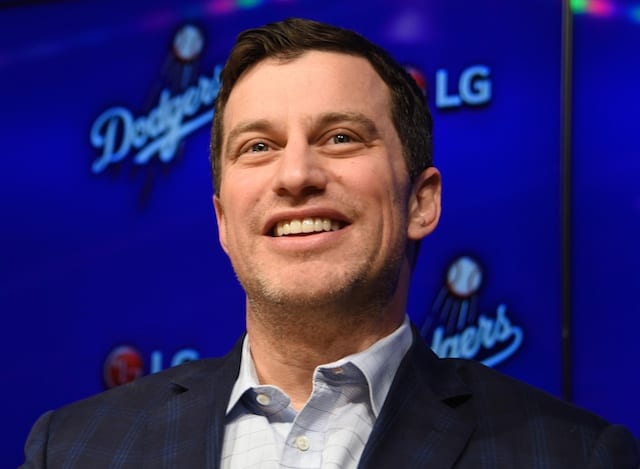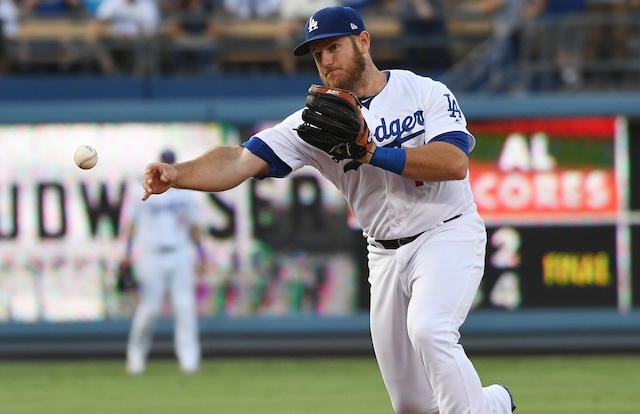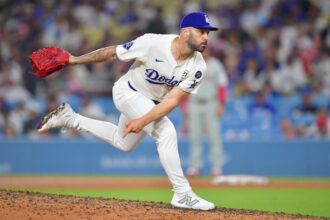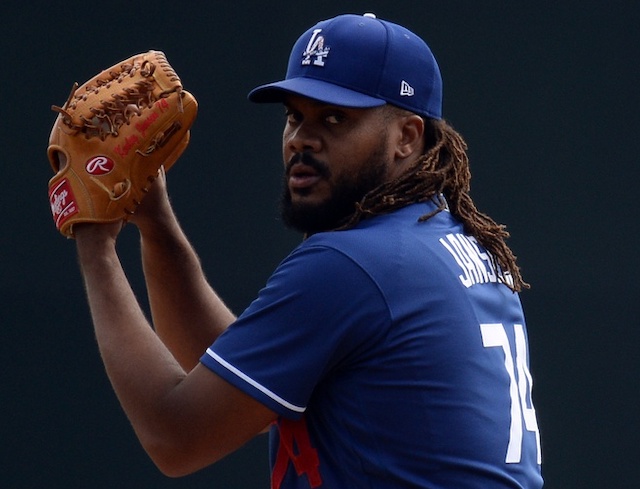The Los Angeles Dodgers are in a precarious spot heading into the 2016 Winter Meetings. On one hand, they’re coming off a season in which they won a fourth straight National League West title and missed the World Series by two games.
On the other, they face the prospect of losing their second-best position player, second-best starting pitcher and their best relief pitcher to free agency, as well as perhaps their greatest adversary: the new CBA.
How do the Dodgers fill their holes without angering the competitive balance Gods? It’s time to get creative.
Starting Pitching
Sure, the Dodgers have an abundance of pitchers, with Clayton Kershaw, Kenta Maeda, Scott Kazmir and Brandon McCarthy guaranteed roster spots (health permitting). Plus, you have the ghost of Hyun-Jin Ryu lurking, along with Alex Wood on the periphery trying to figure out what his role is.
And then you have the kids. Julio Urias, Jose De Leon, Brock Stewart and Ross Stripling, who could all battle for a spot in the rotation during Spring Training. That’s 10 pitchers — or two full rotations worth.
Still, the Dodgers could be on the lookout for a No. 2 starter. The easiest solution would be to re-sign Rich Hill. While Hill is slightly (majorly) injury prone, he’s been one of the best starters in baseball over the past two seasons.
It wouldn’t require more than a few years to retain his services, but the average annual value could prove to be prohibitive. That being said, the Dodgers reportedly have a three-year agreement in place with Hill at $46-48 million, which would be a bargain.
Other names on the market that fit that bill: File Not Found. There aren’t any. Seriously. Hill is the best starter on the market by a wide margin, and the next best option is Ivan Nova, who pitched in Japan last year.
Actually, Nava pitched for the Pittsburgh Pirates, but you weren’t sure where he pitched, were you?
In other news, the San Diego Padres non-tendered Tyson Ross. In 2015 he posted a 4.4 fWAR but made just one start this season (against the Dodgers) and then missed the rest of the year.
Ross underwent surgery for Thoracic Outlet Syndrome in October. It’s no guarantee that he’ll pitch again, let alone return to his previous form, but he’s definitely worth keeping an eye on.
That opens the door for trades. And plenty of them. The aforementioned CBA will make it increasingly difficult for teams like the Dodgers to spend a significant amount of money over the next five years.
Not only will there be more taxes associated with exceeding the luxury tax threshold, there will also be punishments associated with the Draft as well as Major League and international signings.
So, all the Dodgers need to do is find talented, young, cheap starting pitchers and trade for them. Sounds easy, right? Well it may be. Just be prepared to kiss top prospects and Yasiel Puig goodbye.
The usual suspects can be found in familiar places. Dodgers president of baseball operations Andrew Friedman’s old stomping grounds in Tampa have plenty of young pitching, such as Chris Archer, Jake Odorizzi and Drew Smyly.
Archer is obviously the best of the bunch and he’s also signed to an insanely team-friendly contract (owed just $38.5 million through 2021). Smyly and Odorizzi are arbitration-eligible and under control for two and three years, respectively.
Another target is a personal favorite of mine: Vince Velasquez. His second start in 2016 was a complete-game shutout with 16 strikeouts. He struggled in the second half, but still finished with a respectable 4.12 ERA and a 27.2 percent strikeout rate.
There are rumblings the Philadelphia Phillies may be looking to move Velasquez. He’ll be 25 in June and is under team control through 2021.
Those are the types of pitchers the Dodgers should, and probably will target. Don’t get your hopes up for a Zack Greinke homecoming or Justin Verlander, unless they Dodgers send significant salary back.
Regardless, the Dodgers will have to dip into the top of their farm system to claim any of those names. Unless you’re Cody Bellinger or Yadier Alvarez, you’re likely on the block.
CONTINUE READING: Relief Pitchers, Second Base And More








